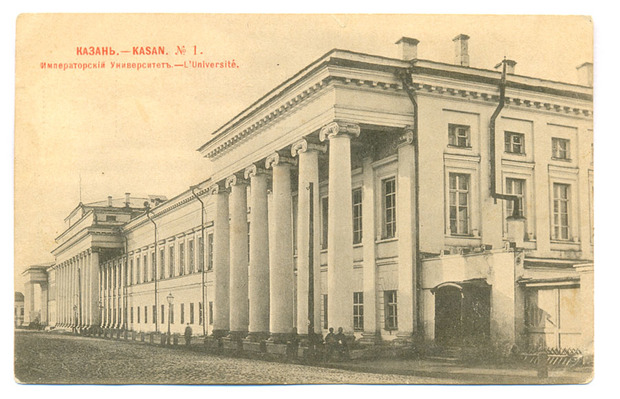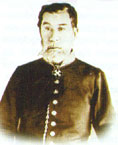‘Many small functionaries use the Tatars’ hospitality and may be a burden for them’
An image of a functionary in the pre-revolutionary world view of the Tatars
The attitude to the Russian officialdom was unclear, to put it mildly. Their businesses and lifestyle were 'praised' by many Russian writers, even in folklore. Liliya Gabdrafikova told about the change of the attitude of the Tatar population to functionaries, how many Muslims were in the environment of functionaries in a column of Realnoe Vremya.
Folkloric reflection
When the system of management of the Russian Empire became more complicated, the Muslim Tatars met with representatives of different government services more often: law enforcement, court, municipal, tax, control bodies, etc.
In the Tatar language, the functionaries of all ranks are called түрә (read as ture). It is interesting that this word is similar to the word түр, which means the most honoured place in the room where respected guests were invited. So, in people's mind, to be a functionary means to have a certain privilege that presupposes honour and respect.
At the same time, there were other meanings but negative ones. For example, an adverb түрәләрчә means as functionaries, or, more precisely, arrogantly, haughty.
One in ten functionaries was Tatar
There were not many Tatars among functionaries in the Russian state service due to the historic conditions. Muslims showed themselves in the military service. Representatives of the regional elite, which consisted of Tatars and Bashkirs, who were heads of cantons of Orenburg Governorate joined the Russian officialdom from the first half of the 19th century. Although the canton system in Bashkiria was liquidized in the 1860s, children of some heads managed to adapt to the new conditions and continued bureaucratic traditions of their families (the Sultanovs, Syrtlanovs, Tevkelevs, etc.). There was not any similar tradition of preparation of national functionaries in other governorates. This is why the Tatars joined the environment of functionaries and nobilities without special privileges.
For many people, military service was a start. Some of them moved up the bureaucratic hierarchy and all in all got the title of nobility thanks to the knowledge of languages serving as civil translators.
The number Muslim nobles and functionaries in the Russian Empire was about 70,000 people by the end of the 19th century. According to the data of 1897, 172 workers of the administration, court and police of Kazan were Tatar. And Tatar functionaries numbered 1,683 people in total. So, the Tatars accounted for 10,2% in the bodies of the administration.
Orientation to Russian culture
Shagi-Akhmet Mukhametovich Alkin was stated as Aleksey Mikhailovich Alkin. Photo: tataroved.ru
A small Tatar officialdom mainly belonged to the nobility. For instance, such noble surnames as the Alkins, Tevkelevs, Teregulovs, Yenikeyevs, Dashkins, Syrtlanovs and others were notable due to their merits in this walk of life.
So, Murza Shagi-Akhmed Alkin was deputy head of Kazan Police Administration from 1839-1858. As his contemporaries say, 'he performed his work fairly, controlled everything himself', 'he was laborious and diligent, kept all people of Kazan on a leash'. He served in Staro-Tatarskaya Sloboda (Old Tatar Village). It is known that despite his official duties, police officer Alkin never forgot to pray every day and regularly visited the mosque. There were not any serious conflicts between him and the people of the Muslim district.
The representatives of noble and bureaucratic families differed from the bulk of the Tatar population. Even their names were written after the fashion of the Russians in some official documents though not all people were baptized. So, Shagi-Akhmet Mukhametovich Alkin was stated as Aleksey Mikhailovich Alkin.
The nobility frequently contacted the Russian population because of their professional duties, copied their lifestyle, rules of behavior, appearance. A local historian from Ufa M. Somov wrote in the mid-1860s that, 'Muslim functionaries and serving people wore a Russian dress; but they often wear off duty a complete Tatar costume that comprised a kaftan of Tatar cut or a gown, fur hat or white wide-brimmed hat; they rarely wear a turban. Their wives used to put on a complete Tatar or a half-Tatar dress'. Another observer A.Rittikh noted at the same time that Kazan Tatar women visited theatres with their husbands, sat in the boxes 'behind their husbands' and 'veiled'. 'They also can be seen at festive gatherings and official balls,' the ethnographer noted.
Domesticated by merchants
Karl Fuchs: 'Rich Tatar merchants invite, or, better to say, often have to invite the governor and other main functionaries to have a cup of tea'. Photo: kpfu.ru
Representatives of the merchant class acquainted with the European culture a but later than the nobility and servants. But, despite a relatively traditional appearance and lifestyle, the entrepreneurs actively supported the cooperation with functionaries.
'Rich Tatar merchants invite, or, better to say, often have to invite the governor and other main functionaries to have a cup of tea,' Karl Fuchs told in the first half of the 19th century. 'It happens at midday. Having had a cup of tea, the merchants treated their guests offering different fruits; the best caviar and different kinds of fish are offered then. Champagne was pouring but the hosts don't drink it. Many small functionaries use the Tatars' hospitality and may be a burden for them.' This tradition preserved in the future. According to a Tatar saying, 'The place of functionary is the most honoured, together with the rich'.
Kushtans and 'menace of Pan-Islamism'
At the beginning of the 20th century, the collaboration of the army of the officialdom and the Tatar community was closely connected with a phantom menace of Pan-Islamism. For this reason, social changes took place in the Tatar world: the authority had a hypersensitivity to the reformation of educational institutions, the appearance of national press and public associations. The incomprehension of modernization changes was conditioned by the interior spy mania policy, which was actively supported by the conservative strata of the Tatar community. Mullahs often used to play this role.
During this period, a word functionary in the Tatar language was often associated with the word kushtan (a person who pleases functionaries and unofficially was close to the authority). Kushtan was quite a distasteful word and used only in a negative sense. There is a number of sayings dedicated to the functionaries and their yes-men. Insincerity and flattery of the latter were stressed; functionaries treated them with indignity but they were dependent on kushtans. Cadimist Mullahs used their contacts to fight against liberal Jadids and used such methods as tip-off. This is why there were many so-called kushtans among them.
A famous scholar Ishmukhamet Dinmukhamov's behaviour is a good example. On the one hand, he forbade ordinary Muslim parishioners to learn the Russian language, to get a secular education and propagandized a closed lifestyle, on the other hand, he was one of the most stalwart kushtans of the Russian officialdom.
So, representatives of almost all strata started to closely contact the functionaries by the beginning of the 20th century.
From outcast to elite
The Tatar population's opinion about the co-religionists functionaries is interesting. At the beginning of the 19th century, such people, in spite of all their merits and recognition in the Russian community, were outcasts in the Muslim society. As a writer N.Gasry noted, Mullahs boycotted the Murzas and pronounced an anathema against Tatar noble militaries who sent their children to Russian educational establishments saying that they were'disloyal people who blindly believed in the spirituality'.
However, by the end of the century, the attitude to the state service changed together with social changes. An increase of the number of Tatar functionaries by the end of the 19th century and the growth of the quantity of the Tatars in Russian educational institutions prove it. At the beginning of the 20th century, even Mullahs sent their children to non-classical secondary schools and gymnasiums of the city.
Many Tatar shakirds, who graduated from a madrasah, dreamt of finding a work with a fixed salary. They raved about getting in a university. The Tatar students, who studied in different higher education institutions in the 1910s consequently became the main national intelligentsia and bureaucratic apparatus not only in Tatar and Bashkir Autonomous Soviet Socialist Republics but also in the republics of Middle Asia and Caucasus.
Reference
Gabdrafikova Liliya – Doctor of Historical Sciences, the main scientific employee of Shigabutdin Mardjani Insitute of History of the Academy of Sciences of the Republic of Tatarstan.

